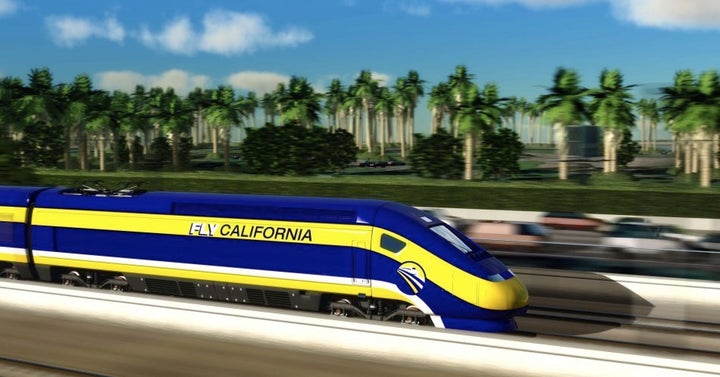
So the California High Speed Rail Authority earlier this week reported that they expect the final cost of constructing the planned rail line between San Francisco and Los Angeles to cost $98.1 billion. Considering likely cost overruns and for the sake of argument, let's round up to $100 billion. That's $100,000,000,000.
I was one of the voters in 2008 who voted to approve a $10 billion bond to get the program, originally estimated to cost $43 billion, started. Indeed, my wife and I had a drawn out and sometimes intense argument over our votes on this particular referendum. She was against it. She argued that in this time of dwindling fiscal solvency and public sector contraction (and November 2008 was the beginning of this desperate situation), an expensive upgrade was the wrong place to spend money.
I disagreed strongly with my wife's point of view. I believe that Franklin Roosevelt's New Deal saved this country from the Great Depression, helped us mobilize for victory in World War II, created a vital and prosperous middle class, and made America truly (for a time) the greatest nation on earth.
Through the 20th Century, public spending facilitated phenomenal growth and opportunity. We have our government (that is, our collective investment) to thank for the interstate highway system, our public schools, our public universities, airports, our phenomenal air traffic control system, splendid national parks, public hospitals, the Internet, and a plethora of other valuable resources available to all Americans for business and pleasure. I told my wife that a massive government investment was just the thing we needed to put Californians to work.
Additionally, we have family and occasional business in Los Angeles and I am quite attracted to the idea of boarding a comfortable train in downtown San Francisco for a quiet, three-hour, minimally polluting, and stress free ride to downtown L.A. Indeed, with the price of gas what it is and the fact that flying entails costs and travel time significantly greater than those of the flight itself, a three-hour train ride at the projected cost of $81 roundtrip looks like a great deal.
Two years later, I still believe that massive public investment is a needed to pull America out of this recession, improve our economic prospects, and put people back to work now. And I would love to live in a country with an interconnected network of high-speed rail, which would modernize our infrastructure, reduce the massive output of global warming gas associated with driving and air travel, and get me to L.A. in three hours. However, and it pains me to say this, my wife was right. Now is NOT the time for this project.
Our once great public universities are starving. The pension funds upon which an unprecedented surge of retiring workers will depend -- and into which they paid -- have been decimated by mismanagement and outright theft (thank you, Wall Street), and our municipalities are bankrupt. When considered within this current milieu, an investment of $100,000,000,000 in what amounts to a fancy upgrade (after all, Los Angeles is already accessible by car, plane and bus) just doesn't seem sensible.
Forget for a moment that current plans call for the first tracks to be laid between Bakersfield and a "rural area north of Fresno"(?), that the option of riding between San Francisco and Los Angeles will not exist until 2030, and that 625,000,000 people will need to buy a roundtrip ticket at a price of $160 in order to cover the cost of constructing this project. Where are we going to get $100 billion? Please, not more debt. California's current level of debt and unfunded obligations stand at over $250 billion, which amounts to almost $20,000 per household.
It would be great to have high-speed rail in California. It would be great if the policy-makers and citizens had not repeatedly voted down sensible and needed tax increases instead of mortgaging our future. If we were solvent and not drowning in debt, we could make this $100 billion investment for the good of the economy and our citizenry.
But, as my wife says, it's too late. When third-grade classrooms lack pencils (much less computers), pregnant mothers have no access to basic health care, and municipalities are literally going out of business, our needs become too dire to think big. The reality of our past decisions has foreclosed on this dream.